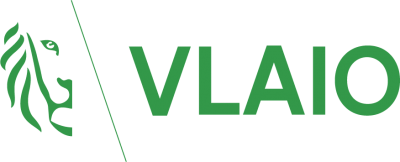Topics
We organise our actions in six thematic & strategic agendas:
Strategic Agendas:
Bio-economy
Circular Construction
Chemicals/Plastics
Manufacturing Industry
Food Chain
Water Cycles
Seven leverages provide additional support:
Leverage effects:
Lever Policy Instruments
Lever Circular Procurement
Lever Communication
Lever Innovation & Entrepreneurship
Lever Financing
Lever Jobs & Skills
Lever Research
What, why and how?
Why are we pursuing a circular economy?
Future visions 2050
How do we see our circular future?
About our management
Who steers what at Flanders Circular?
Loop Care
Recycling disposable nappies
Ontex is a global producer of disposable nappies for babies, incontinence products for adults and sanitary towels, tampons and panty liners for feminine hygiene.
Today, used disposable nappies and other hygiene products make up a large proportion of waste from households, day-care centres and healthcare facilities. This waste is currently incinerated. As sustainability is an important strategic pillar for Ontex, we initiated the Loopcare project together with our partner Agricon. In this project, we conducted a feasibility study into other recycling and valorisation possibilities.
Through the Loopcare project, we investigated the following questions:
Can we take into account the recycling possibilities of disposable nappies from the design stage?
Can we use partially recycled raw materials to manufacture new products?
Can we work with partners who apply innovative recycling techniques?
Ontex
Partners Agricon Nederland
Sectors
Themes
Organisations
Website
MOST IMPORTANT
RESULTS
- Recycling companies do not see the current nappy design as the biggest obstacle to investing in its recycling. However, we have already found several ways to improve recyclability. These could lead to 1.5 kiloton less plastic waste and 3.8 kiloton less CO2 by 2020.
- Different recycling techniques have different advantages and disadvantages when it comes to raw material choices in the design. There are also experiments on composting nappies, with very different design requirements. A cleverly designed nappy must be both recyclable and compostable.
- We cannot use raw materials from mechanical recycling for the production of new products. Risks in terms of hygiene and product safety preclude this and safety remains a top priority for us. Chemical recycling offers prospects because plastics can then be produced with exactly the same original quality and purity.
- Using partially recycled raw materials for the production of plastic packaging is possible. By 2025 Ontex aims to offer plastic bags with at least 30% recycled content in every European country.
MOST IMPORTANT
LESSONS LEARNED
- It is important to counter existing prejudices about bio-based plastics. Using bio-based and degradable plastics in nappy design can significantly reduce environmental impact, especially since the majority will continue to be processed through incineration for a long time.
- However, it will remain difficult to break through bio-based plastics to larger volumes. On the one hand because of the higher cost price and the limited availability, on the other hand because of the controversy that exists about it among consumers, media, environmental organisations, governments ... for example regarding land and water use.
- Choosing a clear direction in the design of our nappies is difficult. So now the idea of biodegradable nappies is revived. However, biodegradation in landfills has so far failed to demonstrate any environmental benefit. Designing nappies for composting is also completely different from optimising them for recycling. Different countries, approaches, techniques ... make it very complex.
- What is remarkable is the great willingness of our direct and indirect suppliers to search together for circular solutions in this project. This has led to several unforeseen collaborations.
WHAT DOES
THE FUTURE HOLD?
By 2020, our measures will already lead to a saving of 1.5 kilotonnes of plastic waste and 3.8 kilotonnes of CO2 and more actions will follow.
Both planned and spontaneous collaborations with different parties in the chain, the subsidy of Flanders Circular, and the internal dynamics within Ontex were an important added value in this project and a big step forward for Ontex.
The cooperation with various developers of innovative recycling techniques will be continued in the future. A fully transparent and mutual knowledge transfer is extremely useful: on the one hand about the limitations and possibilities of recycling technology and on the other hand about product design and production.
It is also important that governments and other organisations continue to support the efforts in our sector with stimulating measures and by correctly informing and raising awareness in the market. After all, market demand remains the main driver for innovation, also in the field of circular solutions. There are now solutions for recycling this type of waste, the biggest challenge now is to this infrastructure cost-efficiently. We absolutely want to avoid that recycling would lead to an increase of the (already high) waste costs.
















